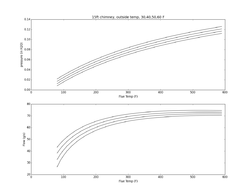I have a regency I2400 that is slow to start. It is about 12 years old, but new to me. Once I getting it going pretty good (flames on all of the wood loaded and flue at about 500F), I can close the draft control and in about 5 min all of the flame is gone. It is my understanding that new stoves should have a minimum amount of air even in the closed position so this can't happen. It has a 6" flue that is about 15ft tall and it is clean. I checked the holes for the glass air wash and the one primary air hole which looks to be just one ~1/4 hole and they are clear. Is there really just one 1/4 hole for the primary air on this thing or am I missing something? I can't get to the air control valve to inspect it to see if it is dirty. Any suggestions of why am not getting enough combustion air or what to check? Thanks.
Regency I2400 combustion air problem
- Thread starter taf
- Start date
-
Active since 1995, Hearth.com is THE place on the internet for free information and advice about wood stoves, pellet stoves and other energy saving equipment.
We strive to provide opinions, articles, discussions and history related to Hearth Products and in a more general sense, energy issues.
We promote the EFFICIENT, RESPONSIBLE, CLEAN and SAFE use of all fuels, whether renewable or fossil.



